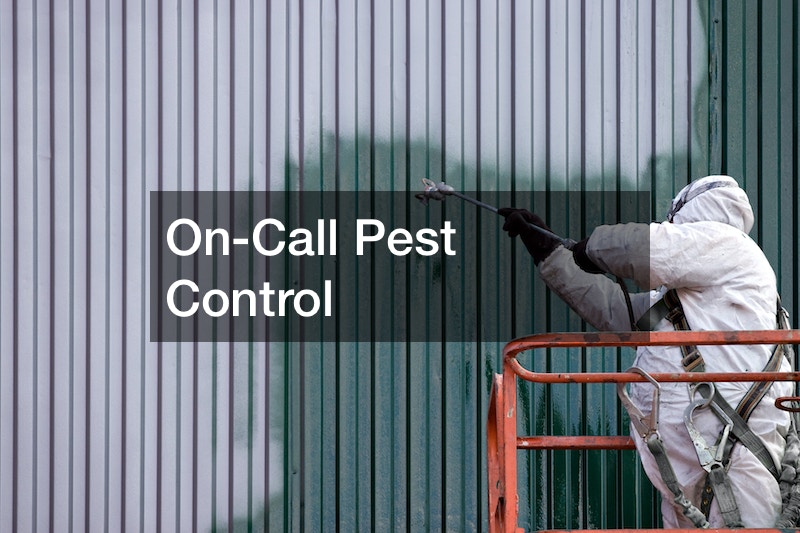When faced with a pest problem like cockroach removal due to infestation, swift action is key. Consider booking pest control online for a hassle-free solution. Opt for a big name in pest control; they often offer reliable services and expertise. Having on call pest control options can make it easier to deal with pest issues as they arise and keep them from getting out of hand.

Having on-call pest control available ensures immediate assistance when needed. Booking pest control online streamlines the process, providing convenience and prompt solutions to tackle pest issues effectively. Whether it’s cockroach removal or addressing other pest concerns, a reputable pest control service makes a significant difference.
Ease the stress of dealing with pests by utilizing online booking options offered by established pest control companies. Their expertise, coupled with the convenience of scheduling services online, ensures a smoother experience in managing and eradicating pests from your home.
When pests invade, don’t hesitate—seek the expertise of trusted professionals in pest control to keep your home pest-free and comfortable. You can book pest control online for services on your schedule and you can also look up options online and find options to pest control book online as well!
Contrary to popular belief, pest control is more than just laying down traps and spraying various chemicals to kill pests. It involves more technology than one may think, and this is exactly why innovations in technology are imperative to the growth and development of the industry.
Having said that, what are the latest innovations in pest control technology that make pest control safer, easier, and more efficient than ever? Here are some of the best ones:
1. Smarter mosquito attractants
Most mosquito traps on the market today use light and heat to bait and kill mosquitoes. However, they also lure other insects, including those that are harmless (e.g., certain species of spiders, ladybugs, honey bees, etc.) and can be beneficial to the environment. Fortunately, there are mosquito attractants for sale today that only attract mosquitoes, and there are even products that target mosquitoes that carry diseases like Zika virus, dengue, and chikungunya.
Furthermore, new mosquito attractants use little to no toxic chemicals to reduce harm to humans and other animals, as well as the environment.
2. Decorative fly lights
Fly lights are not new technologies in pest control, but manufacturers have started to pay more attention to design and style. Today, homeowners can buy fly lights that are aesthetically pleasing and can double as décor instead of looking like actual fly lights.
3. The Internet of Things
The Internet of Things, commonly known as IoT, refers to the interconnection of computing devices and machines through the Internet. Many day-to-day devices like smart home security systems, smart appliances, and wearable devices now have the ability to send and receive data through smart technology and integrated computing.
When it comes to pest control, IoT has become especially useful in the automation of pest observation. To illustrate, traps and devices with monitoring functionalities like automated insect monitoring devices, camera-enabled traps, and pheromone dispensers can connect to each other to collect and transmit data in a much more efficient way. The data that these devices gather can make it easier for homeowners and pest control services to find solutions in the management, prevention, and elimination of pests.
4. Heat-detecting drones
Drones with thermal imaging technology can be beneficial for controlling pests in large areas, such as farmlands and large estates. By using drones to find pests instead of manually inspecting each area, pest control services can localize and detect infestations more efficiently and figure out the best course of action more quickly.

5. Heat treatments
The use of heat in pest control is nothing new, but with recent innovations, non-toxic heat treatments now exist to make the process more effective and efficient. Modern heat treatments involve the use of infrared rays that penetrate surfaces to kill pests without destroying any physical structure. The heat eliminates the pests by dehydrating them and interrupting their physiological processes.
Compared to toxic sprays, infrared rays are much more effective, cause no damage to physical structures, and are safer for humans and pets. Furthermore, there is no risk of pests developing resistance to pest control chemicals and passing on that resistance to offspring.
6. Birth control
Just like with humans, there is birth control for insects as well. Sterilizing insects, usually through radiation in the larval stage, prevent them from reproducing once they mature. This pest control method reduces pests’ numbers but still allows them to be part of the population as beneficial organisms, making it an environmentally friendly practice. But while useful in agricultural and ecological settings, sterilization is not a viable method for residential pest control.
For rats, mice, and other rodents, birth control is administered orally through baits. These baits are then placed in areas with high rodent activity to help reduce the pest population without eliminating it entirely. Again, this method of pest control is beneficial to the ecosystem, but not for residential and commercial settings.
7. Trained canines
Man’s best friend is capable of a lot of things, including detecting infestations like termites and rodents. The main reason for this is their powerful sense of smell, which can detect live bugs, mature pests, and even eggs.
Canines that are trained specifically for this function help pest control services locate infestations much faster, especially in affected areas where there is a lot of ground to cover.
Conclusion
With these recent innovations in pest control, we can see a brighter future ahead: an industry that uses more efficient, humane, and environmentally-friendly methods of pest control—and, most importantly, better results for anyone who needs to find, eliminate, and control the population of pests.
